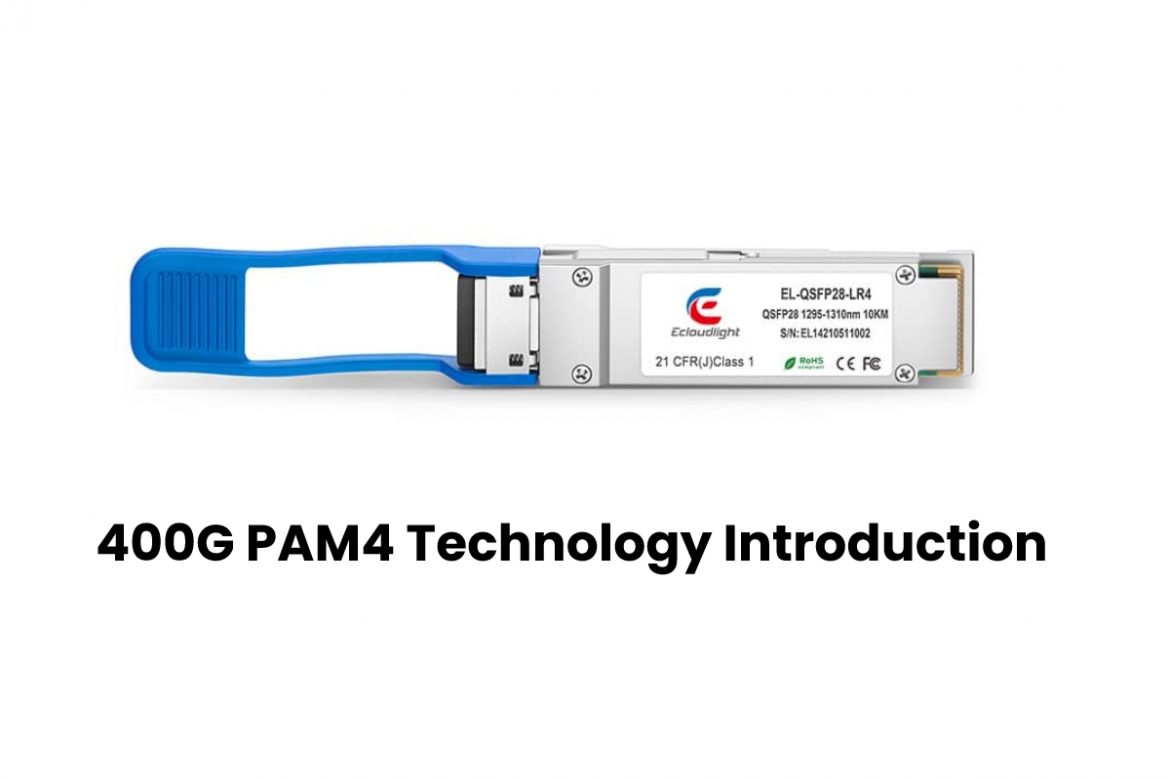400G PAM4 Technology Introduction – PAM4 (fourth-order pulse amplitude modulation) provides an effective and feasible solution for 100/400Gbit/s Ethernet. This paper introduces the technical standard progress of 400Gbit/s Ethernet and the packaging forms of two 400Gbit/s optical modules, and expounds the basic principles of PAM4 optical transceiver modules.
In 100Gbit/s short-distance interconnected optical modules, the transmission format of NRZ (non-return-to-zero) code is generally used. In order to improve the network capacity of high-speed interconnection and reduce the transmission cost per bit. The transmission rate can be increased by introducing PAM4 technology to meet the increasing network bandwidth demand. PAM4 technology of single wavelength 28 and 56GBaud provides a feasible solution for 100/400Gbit/s optical transmission.
Under the same baud rate, the transmission rate of the PAM4 code signal is twice that of the NRZ code, which can carry more information and has higher transmission efficiency. The technical transition from NRZ code to PAM4 brings new challenges to the design, measurement and testing of 100G optical modules, and puts forward new requirements for optical transmission technology and devices. This paper mainly summarizes the existing technologies of 100/400Gbit/sPAM4 optical transceiver modules. Thus, including analysis and summary of relevant standards, technical solutions, device chips and testing instruments.
The 56GBaud PAM4 scheme uses single-mode fiber to transmit a single-wavelength 112Gbit/s signal, and the transmission distance reaches 500m. PSM4 transmits 56GBaudPAM4 signals and can achieve a transmission rate of 400Gbit/s. PAM4 also provides an effective solution for 100Gbit/s Ethernet. The 100Gbit/s optical module can be implemented in QSFP28 or CFP4 package of the single-wavelength 56GBaud PAM4 solution. Only 1 laser and 1 detector are required. The 400Gbit/sPSM4 solution borrows the 100Gbit/sPSM4 specification published by the PSM4MSA to extend a low-cost scalable solution for 100Gbit/s interconnection to 400Gbit/s transmission.
Compared with NRZ, PAM4 reduces the number of required devices and chips, reduces power consumption, reduces package size, and has obvious advantages in cost. Therefore, it is supported by an industrial chain composed of optical chip suppliers, transceiver suppliers and system suppliers. PAM4 puts forward higher requirements for device and chip performance. Thus, which can be achieved by introducing technologies such as pre-emphasis, FEC and equalization compensation. The devices and chips of 28GBaudPAM4 can be quickly applied to the market due to the speed of 25Gbit/s devices used in existing 100Gbit/s optical modules.
The introduction of PAM4 technology reduces the number of optical channels and devices need for 100/400Gbit/s optical modules. Thus, thereby reducing module cost, package size and power consumption. Combined with technologies such as FEC and equalization compensation, it can reduce the impact on device performance. requirements. With the continuous maturity of related technologies, the 100/400Gbit/sPAM4 optical transceiver module will have a very good application prospect. QSPFTEK can provide low-cost 100G PAM4 optical modules and supporting solutions. Please contact us for more information.


